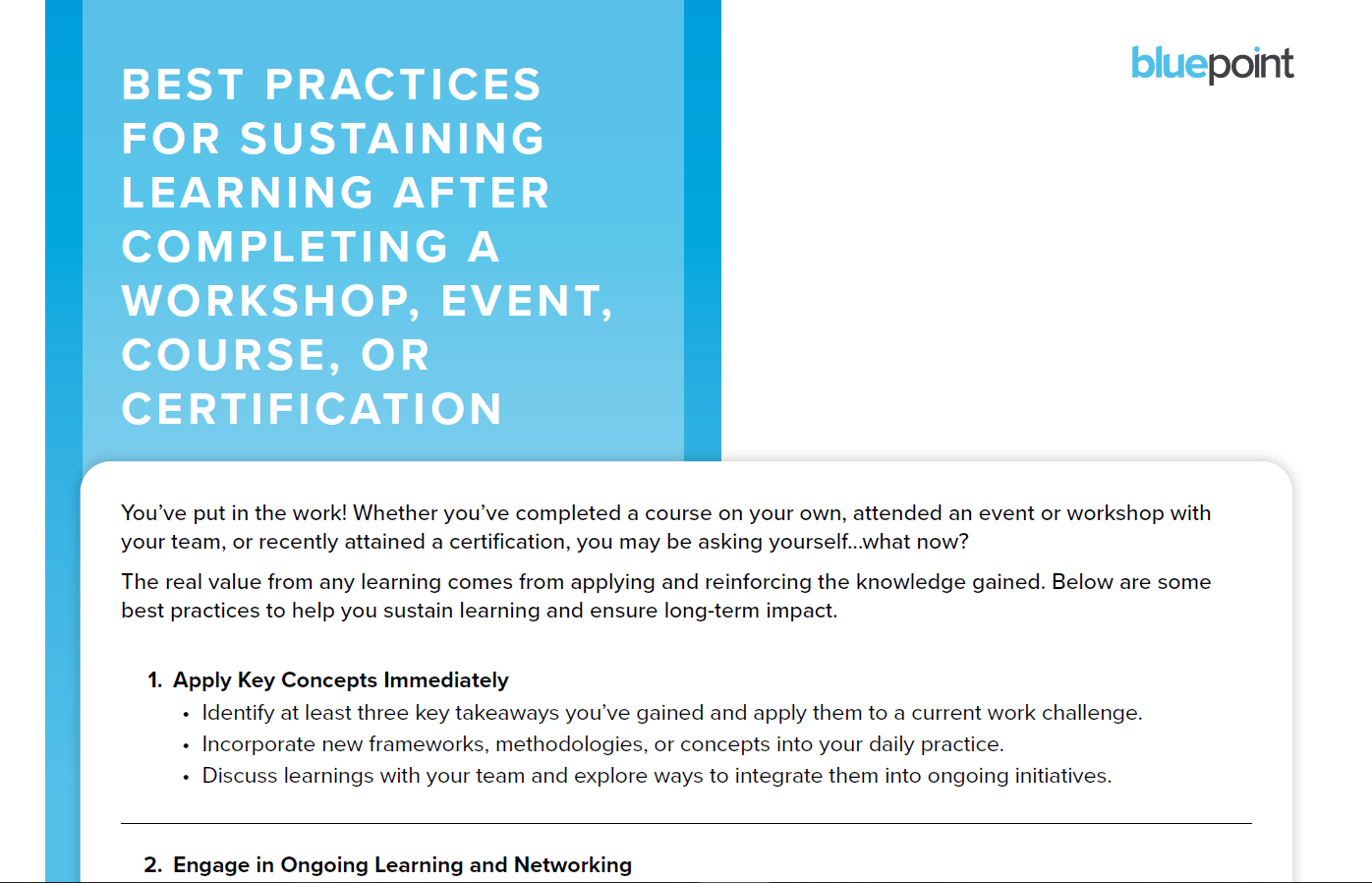Leaders need to constantly be aware of their own performance and give attention to those critical core competencies that make a difference every day. Much has been written about leadership competencies, and some models can be very complex. The reality for most of us, however, is that good leadership comes down to a small set of behaviors that we need to practice and get better at until they become habits and part of who we are. This core group of leadership skills may vary slightly in different roles or circumstances, but typically the following three, when done well, will help you facilitate “the world taking care of itself.”
Vision – Engagement – Alignment
Vision
Consider this. If you were to paint a picture of what your organization looks like today on the front of a puzzle, what would it look like? Can you see it perfectly? Is it a simple picture? Is it clear? Who is in it and where do they fit? Are the faces happy or sad? Who’s leading, who’s following and who is hiding? Is there a lot of activity, or do some sections of the puzzle look tired and dated?
Now ask yourself this question. Can you visualize what you want the puzzle picture to look like twelve months from now? What will have changed? How will it be different? Which faces will no longer be there? Will it include some new products, some new buildings, some new places, some new faces? If the four corners of the puzzle
represent your executive team, will they still be the same? If not, are the faces that will replace them already prominent in your current puzzle?
And here is the really critical question to ask. What if you took your jigsaw puzzle of the future, and gave just the pieces (no picture) to your employees, could they put it together? Do they have any idea what it is supposed to look like? Will they see the same picture as you?
One of the qualities of a great leader is that they are able to paint a picture of a better tomorrow for all of their employees. You are the person they look to for vision and inspiration, and, therefore, the real question becomes not only can you visualize what the puzzle will look like, but have you communicated it effectively so that all your employees share the same vision?
Engagement
Consider this. If you had to rate yourself on a scale from one to ten on how well you engage the people you lead every day, how would you rate? We encourage you to start by asking yourself these two simple questions:
- Do all your people know where they fit in the puzzle?
- Do they feel valued to the point where they know the puzzle is not complete without them?
Most puzzles have some clearly defined pieces and faces. It is easy for some people to see where they fit. Perhaps one of those people is you! But what about those pieces that, in the most complex puzzles, all look the same? It is easy in large organizations for people to get lost, to feel insignificant. They are not one of the four corners that make up the executive team; they are not one of the side pieces that form the management structure. They are one of the many similar pieces that form the blue sky or the aqua ocean or the green grass.
If you are looking for high levels of engagement throughout your organization, it is your role as a leader to make sure that all your people know where they fit, and not only where they fit but that their piece has value. People will rarely take on a new position intending to be disengaged, but can become so over time if they feel their contribution doesn’t really count for much. It is your leadership responsibility to make sure that the picture is not complete without every piece.
Alignment
The final question to ask yourself is this: If people know where they fit, do they also know to whom they connect? Who are the people around them with whom they need to link? The majority of puzzle pieces have four other pieces with which they have to fit. And not just kind of fit or sort of fit, they need to fit perfectly. If they are not willing or able to fit with these four pieces, then they are not in the picture and it is not complete.
If your organization is aligned, your people will know who to connect to, who they rely on and who relies on them. They will know that it is vital that they are all working together to complete the big picture.
As leaders it’s our responsibility, just like in the opening story, to take care of the people. We have to paint a compelling vision of our organization – one that is easily recognizable for the folks whom we lead – even without the picture on the puzzle box! In addition, it’s critical that they understand what piece they represent in the puzzle – and that the puzzle is incomplete without them. Lastly, if individuals know where the organization is going and how they fit in, they are better able to understand with whom they can connect to carry out the vision of the organization.
About The Author

Gregg Thompson
Gregg Thompson is a keynote speaker, author and executive leadership coach. As a much-in-demand speaker, Gregg leads his audiences on interactive, highly-engaging learning journeys that are both educational and entertaining. He dares audiences to abandon many of their closest-held beliefs about leadership and to explore new ways of seeing, relating to and influencing others. He confronts audiences with their own biases, judgments and attitudes, and challenges them to replace these with fresh new perspectives and practices. He vividly demonstrates how leaders can make a major shift in their personal impact and use their natural strengths to master the art of leadership. Gregg is the author of The Master Coach written for leaders who understand the impact of coaching on performance and career acceleration. The book is an invitation to leaders who want to make a significant shift in their attitudes, values and behaviors and become more coach-like in all of their daily interactions and conversations.
Related Resources
Subscribe to newsletter
Subscribe to our newsletter today and receive innovative, insightful and thought provoking resources (videos, webinars and articles) all effective tools for developing leadership talent.
This is a member-only resource. Contact sales at info@bluepointleadership.com for information on Corporate Membership or learn more here: Learn More
This is a member-only resource. Contact sales at info@bluepointleadership.com for more information.





